I want to move people away from thinking of racism as a feeling of hatred, because it’s rare to find someone who blatantly hates people of color. But the impact of racial bias isn’t lessened because it’s not blatant,” Oluo said. “If someone denies me a job because I’m ‘not the right fit,’ without realizing that their idea of the right fit is almost always a White person, it doesn’t hurt me any less than if I’m told, ‘I won’t hire you because you’re Black.’ Racism is not necessarily an intention or a feeling. It is a system that produces predictable results.”
-from "Perspectives: Ijeoma Oluo on Racism in America" (cited and linked below)
Being antiracist is fighting against racism. Racism takes several forms and works most often in tandem with at least one other form to reinforce racist ideas, behavior, and policy. Types of racism are:
-From "Being Antiracist" on the National Museum of African American History website (cited and linked below)
These are articles that come from encyclopedias, overview reports, books, or similarly sourced aimed at providing the basic facts on a topic.
These are articles from more popular media sources such as websites, magazines, newspapers, blogs, and the like.
These are articles from scholarly/academic journals that are written by researchers and other experts in their fields to share the findings of their original research with others in the field.
Source citations: "Perspectives: Ijeoma Oluo on Racism in America." Capital One, 16 Sept. 2020, www.capitalone.com/ about/newsroom/ijeoma-oluo/. Accessed 16 Aug. 2021.
National Museum of African American History. "Talking About Race: Being Antiracist." National Museum of African American History, Smithsonian Institution, nmaahc.si.edu/learn/talking-about-race/topics/ being-antiracist. Accessed 16 Aug. 2021.
Videos can be a great place to get information. Linked below are some featured - both from the library's streaming collection, as well as videos on the web.
Source: "The Myth Of Race, Debunked In 3 Minutes" by Vox, is licensed under a Standard YouTube License.
Source: "Systemic racism explained" by KGW News , is licensed under a Standard YouTube License.
Internalized Racism, Interpersonal Racism, Institutional Racism, Systemic RacismSource: "Amend: The Fight for America | Episode 1 | Netflix " by Netflix, is licensed under a Standard YouTube License.
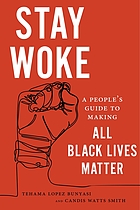 Stay Woke: A People's Guide to Making All Black Lives Matter
by
Lopez Bunyasi
Stay Woke: A People's Guide to Making All Black Lives Matter
by
Lopez Bunyasi
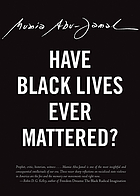 Have Black Lives Ever Mattered?
by
Abu-Jamal, Mumia author.
Have Black Lives Ever Mattered?
by
Abu-Jamal, Mumia author.
 Why Are All the Black Kids Sitting Together in the Cafeteria?
by
Beverly Daniel Tatum
Why Are All the Black Kids Sitting Together in the Cafeteria?
by
Beverly Daniel Tatum
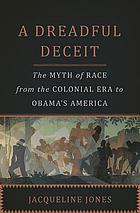 A Dreadful Deceit: The Myth of Race from the Colonial Era to Obama's America
by
Jacqueline Jones
A Dreadful Deceit: The Myth of Race from the Colonial Era to Obama's America
by
Jacqueline Jones
 Black America: A State-by-State Historical Encyclopedia
by
Alton Hornsby (Editor)
Black America: A State-by-State Historical Encyclopedia
by
Alton Hornsby (Editor)
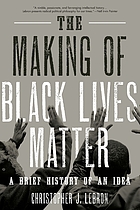 The Making of Black Lives Matter: A Brief History of an Idea
by
Lebron, Christopher
The Making of Black Lives Matter: A Brief History of an Idea
by
Lebron, Christopher
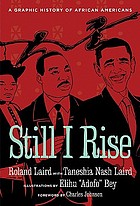 Still I Rise : a Graphic History of African Americans
by
Laird, Roland Owen Laird; Taneshia Nash; Elihu Bey
Still I Rise : a Graphic History of African Americans
by
Laird, Roland Owen Laird; Taneshia Nash; Elihu Bey
 The Myth of Race : The Troubling Persistence of an Unscientific Idea
by
Robert Wald Sussman
The Myth of Race : The Troubling Persistence of an Unscientific Idea
by
Robert Wald Sussman
 The Construction of Whiteness: An Interdisciplinary Analysis of Race Formation and the Meaning of a White Identity
by
Stephen Middleton (Editor); David R. Roediger (Editor); Donald M. Shaffer (Editor)
The Construction of Whiteness: An Interdisciplinary Analysis of Race Formation and the Meaning of a White Identity
by
Stephen Middleton (Editor); David R. Roediger (Editor); Donald M. Shaffer (Editor)
 Racism without Racists: Color-Blind Racism and the Persistence of Racial Inequality in the United States
by
Eduardo Bonilla-Silva
Racism without Racists: Color-Blind Racism and the Persistence of Racial Inequality in the United States
by
Eduardo Bonilla-Silva
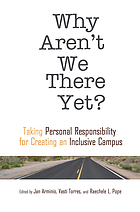 Why Aren't We There Yet? : Taking Personal Responsibility For Creating An Inclusive Campus
by
Raechele L. Pope (Editor); Vasti Torres (Editor); Jan Arminio (Editor)
Why Aren't We There Yet? : Taking Personal Responsibility For Creating An Inclusive Campus
by
Raechele L. Pope (Editor); Vasti Torres (Editor); Jan Arminio (Editor)
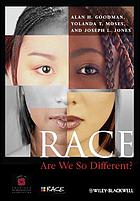 Race: Are We So Different?
by
Alan H. Goodman;, et al. (As told to)
Race: Are We So Different?
by
Alan H. Goodman;, et al. (As told to)

